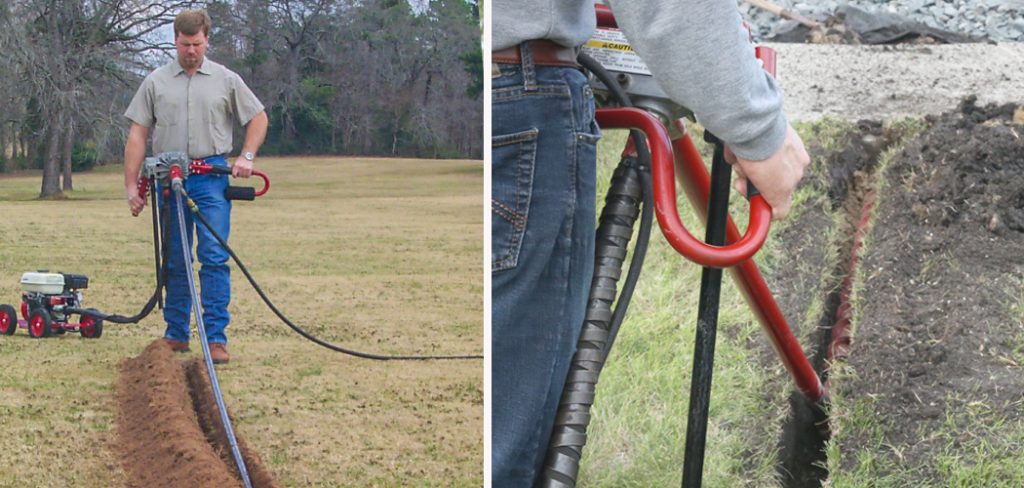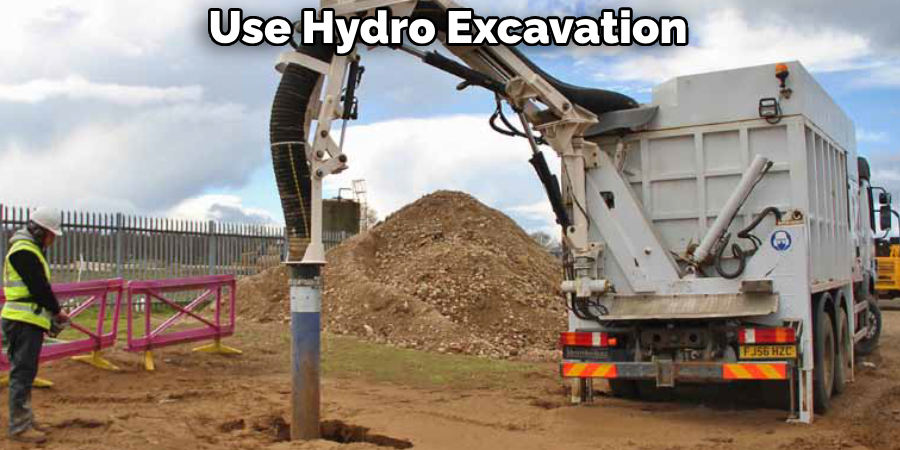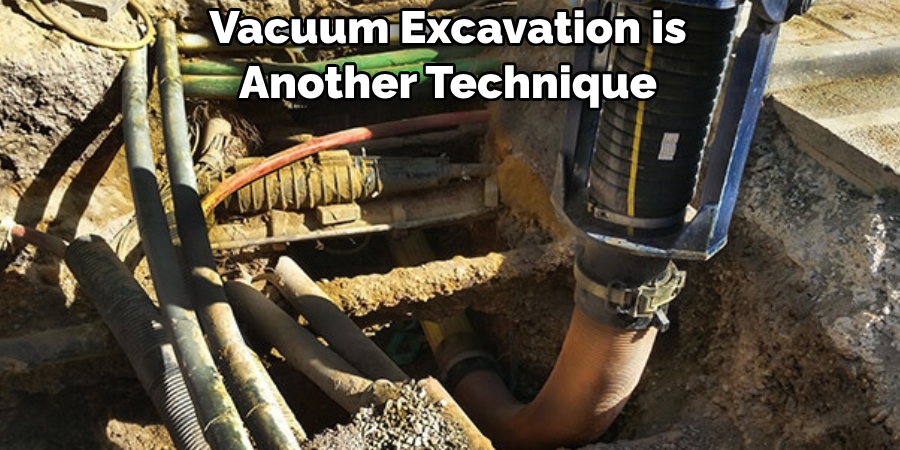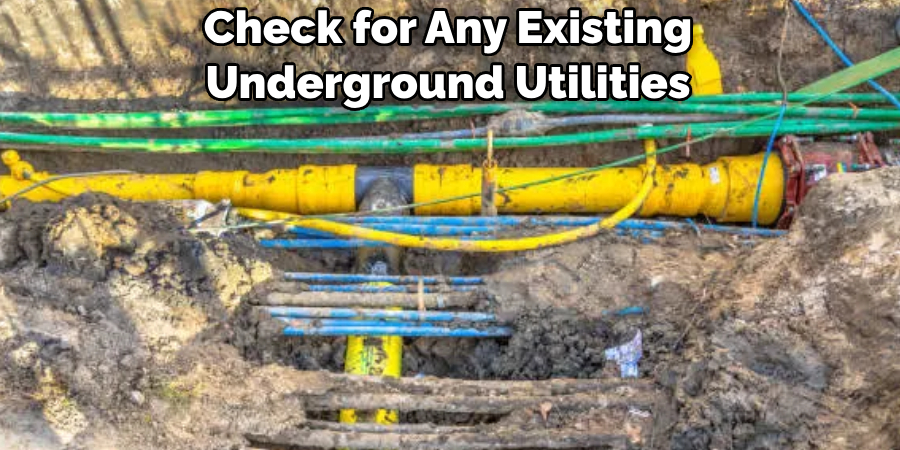Conducting underground work, such as installing irrigation, utility lines, or drainage systems, often involves the challenge of boring beneath a driveway. This task demands precision and careful planning to ensure a successful outcome without compromising the structural integrity of the driveway. In this comprehensive guide, we’ll explore the step-by-step process of how to bore under driveway, covering essential tools, safety measures, and expert techniques.

Whether you’re a DIY enthusiast or working with professionals, understanding the intricacies of this task is crucial. From site preparation and equipment selection to executing the bore, this tutorial will equip you with the knowledge and confidence to navigate the complexities of creating an underground passage beneath your driveway efficiently. Embark on the journey of subterranean construction with finesse as we unravel the secrets to successfully boring under a driveway.
Reasons for Boring under a Driveway
Boring under a driveway is a common practice when installing or repairing underground utilities such as water pipes, gas lines, electrical wiring, or even irrigation systems.
It involves creating an underground tunnel to pass the utilities without disrupting the surface of the driveway. While it may seem like an extra step in the installation process, there are several reasons why boring under a driveway is necessary and beneficial.
Avoiding Damage to the Driveway
One of the main reasons for boring under a driveway is to avoid damaging it during installation or repair work. Trenching or digging directly under the driveway can cause cracks, shifts, or even complete collapse of the surface.

This can be costly and time-consuming to repair, not to mention inconvenient for those using the driveway. Boring allows for a minimally invasive installation process, keeping the driveway intact and preserving its structural integrity.
Maintaining Aesthetics
In addition to avoiding damage, boring under a driveway also helps maintain the aesthetics of the property. Trenching or digging can leave unsightly scars on the surface of the driveway, which may be difficult or impossible to repair. This can diminish the overall appearance and curb appeal of the property. Boring, on the other hand, does not disrupt the surface of the driveway and keeps it looking clean and well-maintained.
Saving Time and Labor Costs
Boring under a driveway can also save time and labor costs during installation or repair work. As mentioned earlier, trenching or digging can be a time-consuming process, especially when trying to avoid damaging the driveway. Boring eliminates this issue and allows for a more efficient installation or repair process.
10 Methods How to Bore Under Driveway
1. Use a Jackhammer
Using a jackhammer is the most common way to bore under a driveway. This method requires renting or purchasing a jackhammer, which can be quite expensive and may require some technical skill to operate properly. Once you have the jackhammer, you will need to create an opening in the driveway large enough for the drill bit to pass through. Then, simply drill straight down until you reach the desired depth.
2. Use an Auger
An auger is another tool that can be used to bore under driveways. An auger consists of a long metal shaft with blades at one end that are used to cut through soil and other materials. To use an auger, start by digging a small hole at the edge of the driveway so that you can insert the auger’s blades into the ground below. Then use the auger to bore beneath your driveway until you reach your desired depth.
3. Use a Tunneling Machine
Tunneling machines are large pieces of equipment that can be used to bore beneath driveways and other surfaces with ease. Tunneling machines are typically rented from construction companies and require some technical knowledge to operate safely and effectively. With this method, you will need to dig out an access point in order for the machine’s head to fit underneath your driveway before beginning tunneling operations.

4. Use an Air Hammer
An air hammer is another tool that can be used for boring beneath driveways and other surfaces. An air hammer works by using compressed air to create vibrations, which cause bits attached to its head to break up material as it moves along its path underground. To use an air hammer, start by digging out an access point in order for its head to fit underneath your driveway before beginning operations.
5. Use a Trenchless Boring Machine
A trenchless boring machine is another tool that can be used for boring beneath driveways without having to dig any trenches first. A trenchless boring machine works by using pressurized water or foam mixed with sand or other media, which is then forced through pipes placed underground in order to cut away material as it moves along its path underground until it reaches its destination point beneath your driveway surface. This method requires less labor than traditional methods but may not be suitable for all types of soil conditions due to its reliance on pressurized water or foam mixture being forced through pipes placed underground in order for it to work properly.
6. Use Hydro Excavation

Hydro excavation is another method that can be used for boring under driveways without having to dig any trenches first. This method uses high-pressure water jets combined with vacuum suction technology in order to remove soil from around objects such as pipes or cables located underground. The vacuum suction then collects all of the removed soil, making this method both efficient and precise when compared with traditional digging techniques.
7. Use Horizontal Directional Drilling (HDD)
Horizontal directional drilling (HDD) is another technique that can be used for boring under driveways without having any trenches dug first. HDD involves using specialized drilling equipment such as drills, reamers, and steering tools in order to create holes horizontally underneath surfaces such as roads, sidewalks, or driveways. This technique requires less labor than traditional methods but may not always be suitable due situations where there are obstacles present due its reliance on specialized drilling equipment being able maneuver around them while still maintaining accuracy during operations .
8. Use Vacuum Excavation
Vacuum excavation is another technique that can be used for boring beneath driveways without having any trenches dug first. This method uses high-powered vacuums combined with pressurized water jets in order to remove soil from objects such as pipes or cables located underground. The high-powered vacuums then collect all of the removed soil, making this method both efficient and precise when compared with traditional digging techniques.

9. Use Jetting Technology
Jetting technology is also known as hydro jetting, which utilizes high-pressure water jets in order to cut through tough materials like concrete, asphalt, rock, clay, dirt, etc. Jetting technology has been proven effective when attempting to bore underneath driveways since it utilizes powerful streams of pressurized water, which helps break up more stubborn materials faster than other methods, such as vacuum excavation or horizontal directional drilling (HDD), which might take a longer time to complete the same task.
10. Heat Fusion Method
Heat fusion is another technique that can be utilized when attempting to bore underneath driveways without having any trenches dug first. This method involves melting together two pieces of plastic pipe by applying heat directly onto their surfaces using specialized hot air welding guns in order to form seamless joint connections between them.
This technique requires a skilled operator with experience in heat fusion welding, but it is known to be one of the most effective methods when attempting to create durable and long-lasting underground pipe systems without disturbing surfaces like driveways or roads.
Things to Consider When Boring Under Your Driveway
When it comes to home improvement projects, there are few things that can be as intimidating as a driveway. This is especially true when it comes to installing anything underneath the driveway, whether it’s irrigation lines or electrical cables. But fear not, because with the right knowledge and techniques, you can successfully bore under your driveway without any major issues. Here are some things to consider before you start the project:
Check for Underground Utilities
Before starting any digging or boring work, it is essential to check for any existing underground utilities such as gas lines, water pipes, or electrical cables. This can be done by contacting your local utility companies and requesting a utility locate service. They will mark the locations of any known underground utilities, allowing you to avoid damaging them during the project.

Determine the Best Boring Method
There are several methods for boring under a driveway, including trenchless technology, directional drilling, and traditional tunneling. Each method has its own advantages and disadvantages, so it is essential to research and determine which one will work best for your specific project.
Gather Necessary Equipment
Once you have determined the best boring method, it is time to gather all the necessary equipment. This may include a boring machine, drill bits, pipes or conduits, and safety gear such as gloves and goggles. Make sure to also have any required permits from your local authorities before starting the project.
Common Mistakes to Avoid When Boring Under a Driveway
While boring under a driveway may seem like an intimidating task, it is actually a common and necessary process for many home renovation projects. However, as with any DIY project, it’s important to be aware of and avoid common mistakes that can lead to costly repairs or safety hazards.
Not Obtaining Proper Permits
Before beginning any drilling or excavation work on your property, it’s crucial to obtain the necessary permits from your local government. These permits ensure that you are following proper safety protocols and regulations, and they also protect you from potential legal issues if something were to go wrong during the process. Failure to obtain permits can result in hefty fines or even having to redo the entire project.
Not Properly Identifying Utility Lines
One of the biggest mistakes when boring under a driveway is not accurately identifying the location of underground utility lines. This can lead to serious safety hazards, such as hitting a gas line or electrical wiring. Always call your local utility companies to come and mark the location of any underground lines before beginning the boring process.
Using Incorrect Equipment
Using improper or inadequate equipment for the job can not only prolong the process but also result in damage to your driveway or surrounding structures. Make sure to use equipment specifically designed for boring under a driveway, such as directional drills or horizontal boring machines.
Conclusion
With the information provided in this blog post, you are now well-prepared to bore under your own driveway. Gather up the tools and supplies needed, double check that all instructions and guidelines have been followed, and then enjoy the satisfaction of having increased access to your property.
Remember that the safety of any project should come first, so take your time when utilizing a boring tool in order to avoid accidents or property damage.
Taking preventive steps such as wearing safety equipment will also help to ensure success.
Furthermore, if you feel uncomfortable about tackling this job by yourself, enlist professional help and get the job done right! Be sure to follow all instructions on how to bore under driveway carefully, and always consult an expert when in doubt.
